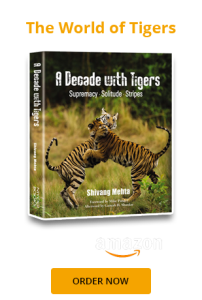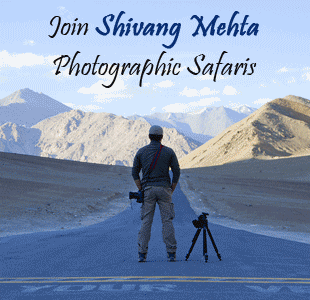A month with the Canon RF 100-500mm
The Canon 100-400mm IS2 has been my go-to piece of glass for the past few years. I love the versatility of the lens and time and again I have written and advocated the use of this lens for various field scenarios in wildlife photography. When Canon launched the twin brother of this lens in the form of a Canon RF 100-500mm for the mirrorless state-of-the-art wildlife cameras like the Canon EOS R6 and Canon EOS R5, I was quite intrigued as to what difference it can bring to my area of work. I was given the opportunity to try out this lens for a month and with my ongoing projects I could put it to field usage in two different situations.
The first step was to use the Canon RF 100-500mm mounted on the Canon EOS R5 in a typical Indian wildlife safari where one is confined to a vehicle. Jhalana Leopard Sanctuary in Jaipur was my area of work where I focused on big cats and mammals. Stage 2 of the field test was the outskirts of Corbett Tiger Reserve where I spent 3 weeks on foot searching for Himalayan wildlife and birds.
Some of my observations from this experiences are listed below:
- I am a 400mm 2.8 user and for maximising my output from the Canon RF 100-500mm I took a conscious decision not to carry the big prime for both these field trips. Did I ever miss or regret that decision? No! I didn’t as the Canon RF 100-500mm was versatile enough specially with the Canon EOS R5 which has an in-camera cropping feature that enables you to produce cropped RAW files. So essentially I was able to toggle between 500mm and 800mm using the in-camera crop feature just at the click of a button.
- Birding with the light weight Canon RF 100-500mm in a rough Himalayan terrain was great fun. The ease of use and the ability to hike around with a light weight equipment set up that enables you to scale up to 800mm was a really cool feature.
- On many occasions in both the field locations, the light conditions were tricky and I had to bump up the ISO in order to get the desired shutter speed. The Canon RF 100-500mm handled low light extremely well whenever the light threw a challenge.
- Canon had also given me the RF teleconverters and I did use the Canon RF 100-500mm with the 2x and 1.4x RF teleconverters. Something which I have never done with the Canon EF 100-400mm IS2. The experiment was a success as whenever the subject was is good light, the convertors did give the desired results.
As a concluding statement here is my take on the Canon RF 100-500mm. All you photographers migrating to the mirrorless technology who are still thinking of a good zoom telephoto for wildlife photography this is the lens to go in for. It will give you the range, flexibility and you should confidently use it across various genres of nature photography like I did in the past month. From birds, mammals and landscapes – it just keeps performing!
Sample images below:











Leave a comment